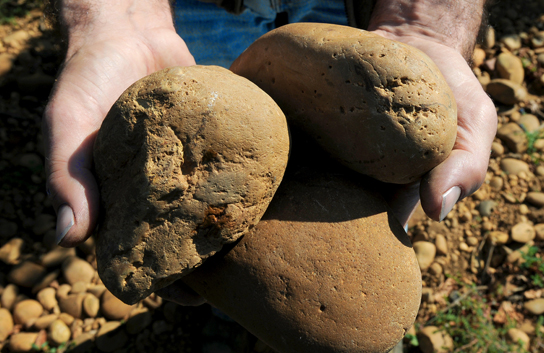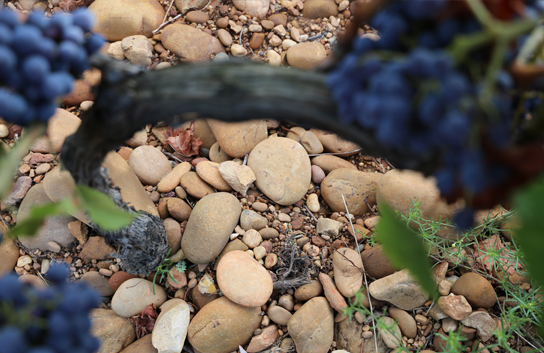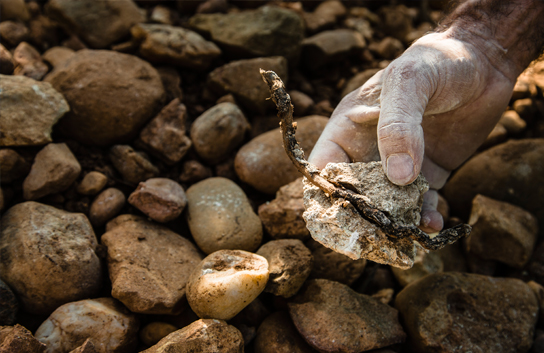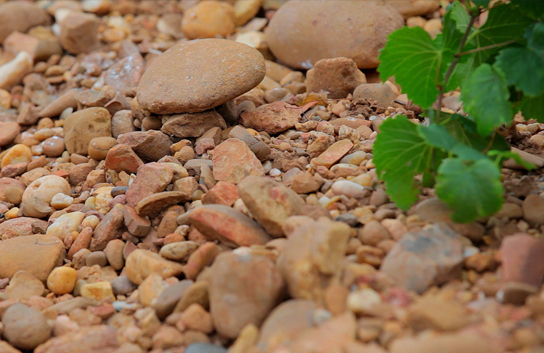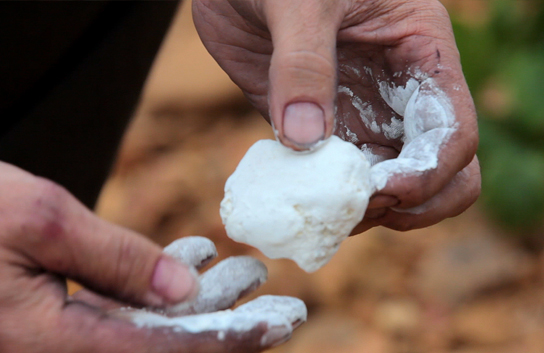The first terroir of “galets” sits atop an iron-rich red clay. It's warm and earlier-ripening due to its stones’ ability to radiate the solar heat. Below, the iron-rich clay stores the rainfall, nourishing the vine during hot, dry summers with water and minerals. It gives powerful red wines with aromas of very ripe red fruits and garrigue scents and soft spices. Fully mature tannins give longevity to these beautiful wines.










